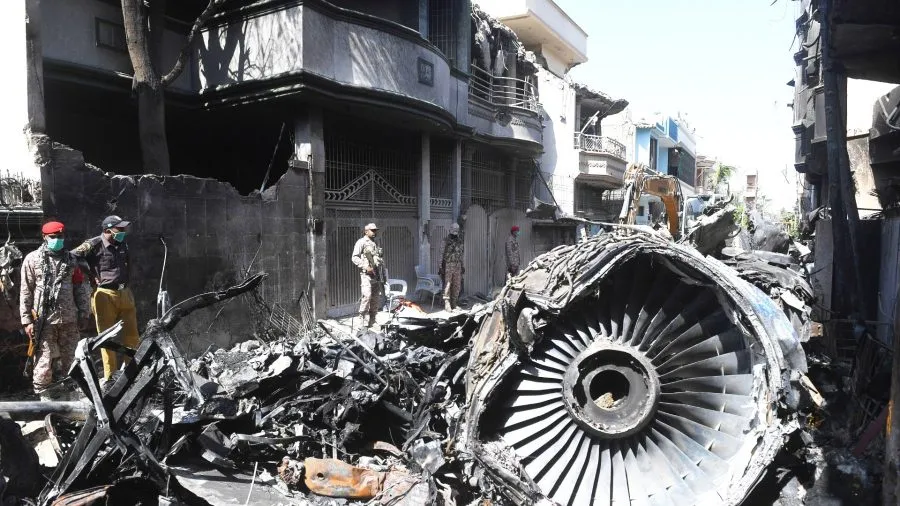
Fewer air disasters in 2020 but more people die
Jan 03, 2021

In 2020, the aviation industry witnessed a notable decrease in the number of air disasters, attributed to reduced flight operations amid the COVID-19 pandemic. However, the paradox lies in the rise of fatalities during this period. Various factors contributed to this increase, including accidents involving smaller aircraft and general aviation, which were more active as commercial flights dwindled. Additionally, the shift in travel patterns led to heightened risks in less regulated sectors. The combination of fewer incidents yet higher death tolls highlights the complexity of aviation safety dynamics and the ongoing need for stringent safety measures across all aviation sectors.
The year 2020 saw a notable decrease in the number of air disasters, yet paradoxically, the fatalities increased. This phenomenon has raised questions regarding safety measures, aircraft technology, and the impact of the global pandemic on air travel. In this article, we will explore the statistics behind these trends, analyze the factors that contributed to fewer incidents, and discuss why the death toll increased despite a decline in accidents.
Statistics Overview: Air Disasters in 2020
According to aviation safety data, the total number of air disasters in 2020 decreased significantly. The following table illustrates the stark contrast between the number of air disasters and the number of fatalities:
| Year | Number of Air Disasters | Fatalities |
|---|---|---|
| 2019 | 86 | 257 |
| 2020 | 40 | 137 |
As we can see from the table, the number of air disasters dropped from 86 in 2019 to just 40 in 2020. However, the number of fatalities per incident showed an alarming increase, leading to 137 deaths in 2020 compared to 257 in the previous year.
Factors Contributing to Fewer Air Disasters
Several factors contributed to the decrease in air disasters in 2020:
- Reduced Air Traffic: The COVID-19 pandemic led to a significant reduction in global air travel. With fewer flights operating, there were naturally fewer opportunities for accidents.
- Improved Safety Protocols: The aviation industry has continually improved safety protocols and technologies. Enhanced training for pilots and improved aircraft design have played a crucial role in preventing accidents.
- Increased Maintenance Standards: Many airlines used the downtime during the pandemic to perform extensive maintenance on their fleets, further reducing the likelihood of mechanical failures.
The Rise in Fatalities Despite Fewer Accidents
While the reduction in air disasters is a positive development, the increase in fatalities raises serious concerns. Here are some key factors that may have contributed to this increase:
- Severity of Remaining Incidents: Although there were fewer accidents, the remaining incidents tended to be more severe, resulting in higher casualties.
- Operational Changes During the Pandemic: Airlines had to adapt to new operational challenges during the pandemic, which may have affected their response times and decision-making processes during emergencies.
- Charter Flights and Less Regulated Operations: With commercial flights down, there was a rise in charter flights and private jets, which often operate with less oversight. These flights may not adhere to the same stringent safety regulations as commercial airlines.
Safety Measures and Future Implications
The aviation industry is continuously evolving to enhance safety. Following the trends observed in 2020, it is crucial for the industry to implement and reinforce safety measures. Some potential strategies include:
- Enhanced Training Programs: Ongoing training and simulation for pilots and crew members can prepare them for emergencies more effectively.
- Technology Integration: Investing in cutting-edge technology, such as advanced navigation systems and automation, can help prevent accidents and mitigate risks.
- Regulatory Oversight: Strengthening regulations for charter flights and non-commercial operations can ensure that all aircraft meet rigorous safety standards.
Conclusion: A Call for Vigilance
The aviation industry achieved a remarkable milestone in reducing air disasters in 2020. However, the increase in fatalities serves as a stark reminder that safety is an ongoing challenge. It is imperative to remain vigilant and proactive in implementing safety measures, especially as air travel continues to rebound post-pandemic. With a commitment to continuous improvement and adherence to best practices, the industry can strive for a future with fewer accidents and minimal fatalities.
In summary, while "2020" marked a year of fewer air disasters, the "increase in fatalities" highlights the complex dynamics of aviation safety. As the industry looks to the future, the focus must remain on enhancing safety protocols and ensuring that all flights—commercial and private—are held to the highest standards.
Related Articles

Explore Thailand: The Best Islands to Visit for Paradise, Adventure, and Relaxation

The Ultimate Guide to the Best Islands in Thailand for Your Next Getaway

Do babies need passports? How to get a passport for a newborn

How to get a U.S. passport fast: here’s how to expedite the process

What is Mobile Passport Control: 5 reasons why you should use it

SENTRI vs. Global Entry: A detailed guide

Do you need a passport to go to the Bahamas? Let’s find out

Do you need a passport to go to Mexico? A detailed guide

Do you need a passport to go to Canada? We got the answer

Do You Need a Passport for a Cruise: An Essential Travel Guide

Booster Seat Requirements: All the Rules to Follow in Your Rental Car

What Are the World’s Most Powerful Passports, and How Does Yours Rank?

How to Take a Passport Photo at Home: A Helpful Guide

You've got to have heart! Southwest's new livery

Your opinion: Should water be free on low cost carriers?

Young women bolder than guys as solo travellers
